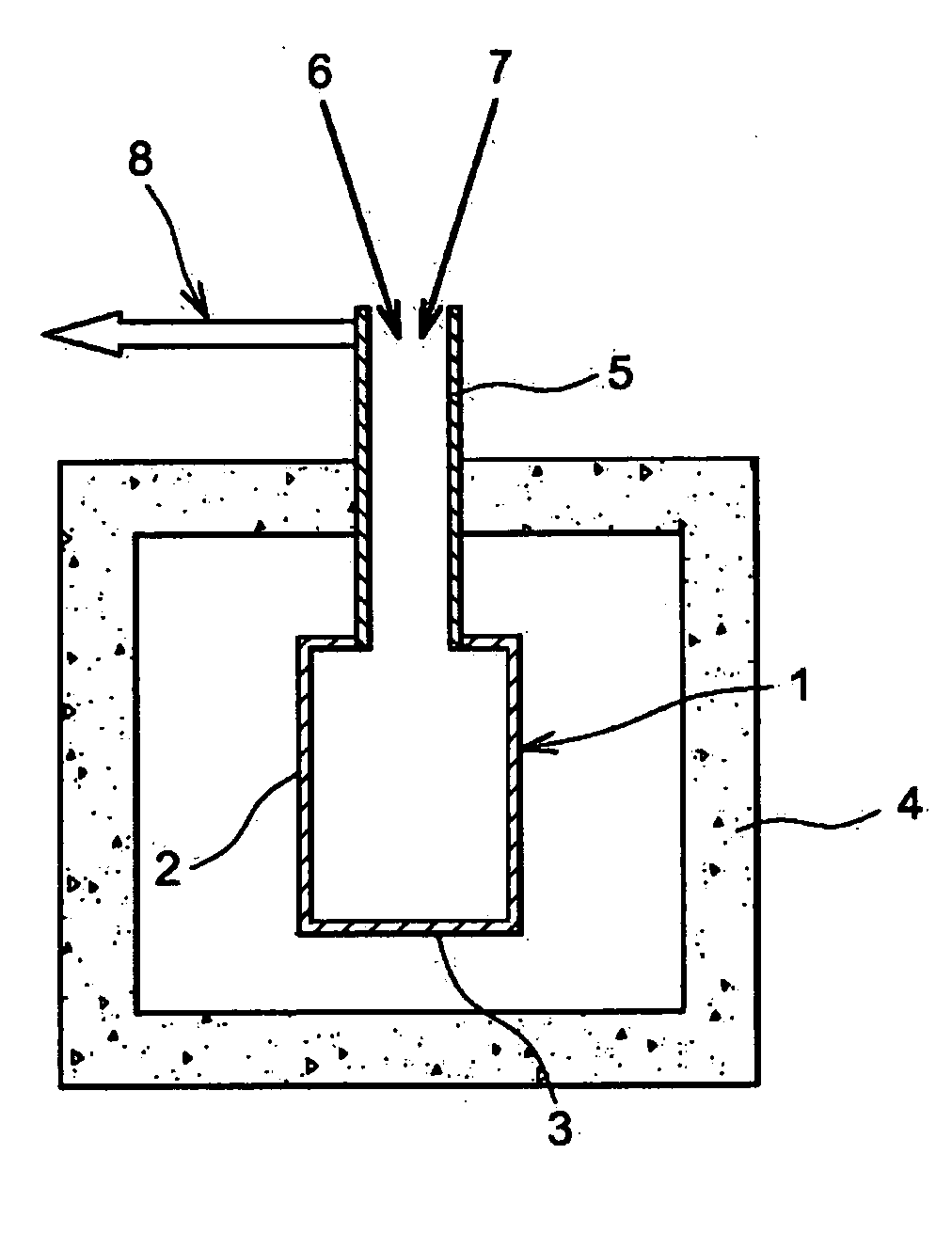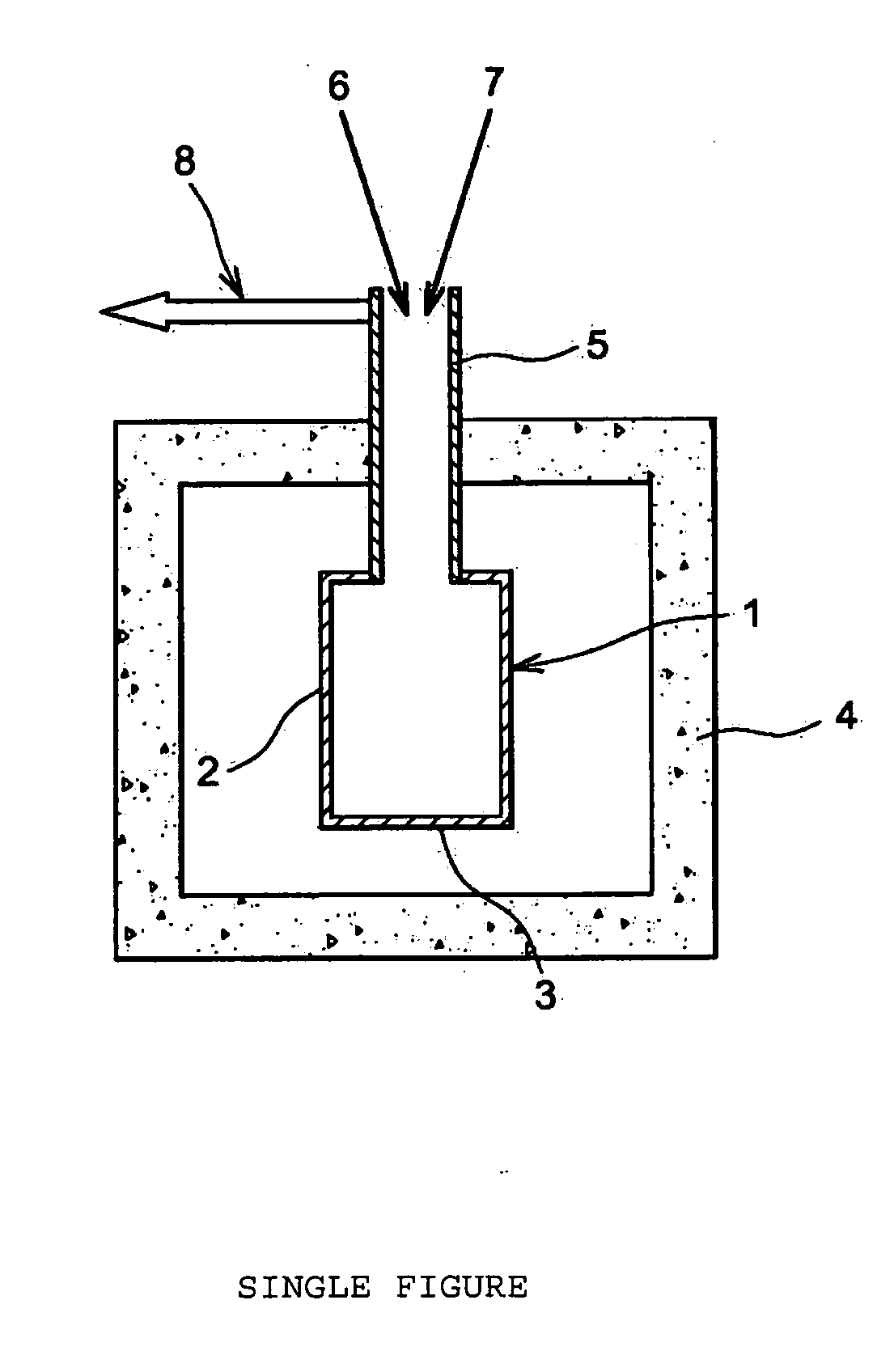Process for waste confinement by vitrification in metal cans
a technology of metal cans and waste, which is applied in the field of waste confinement, containment, and vitrification in metal cans, can solve the problems of limiting the duration and temperature of glass production, the global cost of the process, so as to reduce the range of glasses that can be produced and the range of wastes that can be treated
- Summary
- Abstract
- Description
- Claims
- Application Information
AI Technical Summary
Benefits of technology
Problems solved by technology
Method used
Image
Examples
example 1
This example is an example nonconforming with the invention in which no oxidising additives are added into the vitrification additive.
The composition of the waste solution is described above;
In this example, the can is a 316 L stainless steel can.
The vitrification additive is composed of the following oxides, without any addition of oxidising additives: SiO2 62.5%, B2O3 19.5%; Li2O 1.89%; ZrO2 3.42%; Na2O 7.59%; Al2O3 3.51%.
The measured oxygen pressure is 10−10 atmospheres.
Cadmium has partially vaporised, volatilized, the cadmium content analysed in the glass is 1.52% by mass compared with 2.67% expected.
Foaming phenomena and severe material entrainment occurred during production of the glass, as was clearly seen in the process gas treatment system, and these gases contained cadmium.
Furthermore, severe corrosion of the can and the presence of sulphide balls, beads, was observed.
example 2
This is an example according to the invention in which oxidising additives are added into the vitrification additive.
The waste solution is the same as in example 1.
In this example, the can is a 310 stainless steel can (NS30).
The vitrification additive used is a frit containing 3% by mass of iron, predominantly with oxidation degree +III that gives it a slightly oxidising capacity.
The iron oxide is added into the frit in order to provide acceptable properties to the material for its production in the process.
In other words, the vitrification additive contains 3% by mass of Fe2O3 as the oxidising agent and a preparation containing 3.6% by mass of Fe2O3 in the glass melt is targeted, since part of the Fe2O3 originates from the waste.
Therefore the composition by mass of the glass frit that makes up, constitutes the vitrification additive is SiO2 60%, B2O3 19%; Li2O 2%; ZrO2 2%; Na2O 7%; Fe2O3 3%; CaO 2%; Al2O3 3%; Nd2O3 2%.
The oxygen pressure increases to 10−9.3 atmosphere.
The glass is ...
example 3
This example is an example according to the invention in which oxidising additives are added into the waste solution.
The waste solution is the same as that in examples 1 and 2.
The can and the glass frit constituting, forming the vitrification additive are the same as those used in example 2, except that 9% additional iron III oxide is also added into the waste solution such that the final glass contains 12.6% by mass of Fe2O3 iron oxide (namely 9%+3.6%).
The oxygen pressure in the final glass is considerably higher than in examples 1 and 2 because it is equal to 10−3.1 atmosphere.
At this oxygen pressure, the cadmium is fully oxidised and no longer causes any degassing.
Furthermore, no settled sulphide balls or metal particles are observed.
Furthermore, the metal can is only slightly corroded.
These examples confirm the advantage obtained during vitrification of waste in hot metal can processes, and particularly the “in-can melter” process, due to the addition of oxidising elements that ...
PUM
| Property | Measurement | Unit |
|---|---|---|
| temperature | aaaaa | aaaaa |
| boiling temperatures | aaaaa | aaaaa |
| boiling temperatures | aaaaa | aaaaa |
Abstract
Description
Claims
Application Information
 Login to View More
Login to View More - R&D
- Intellectual Property
- Life Sciences
- Materials
- Tech Scout
- Unparalleled Data Quality
- Higher Quality Content
- 60% Fewer Hallucinations
Browse by: Latest US Patents, China's latest patents, Technical Efficacy Thesaurus, Application Domain, Technology Topic, Popular Technical Reports.
© 2025 PatSnap. All rights reserved.Legal|Privacy policy|Modern Slavery Act Transparency Statement|Sitemap|About US| Contact US: help@patsnap.com


